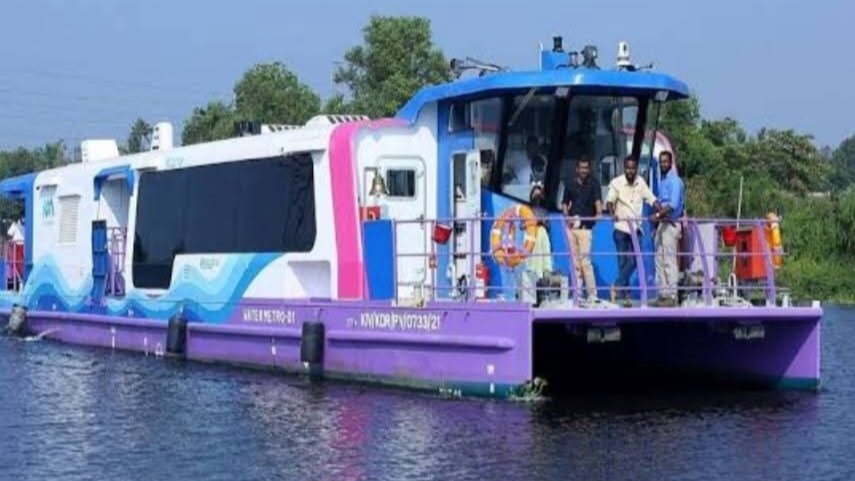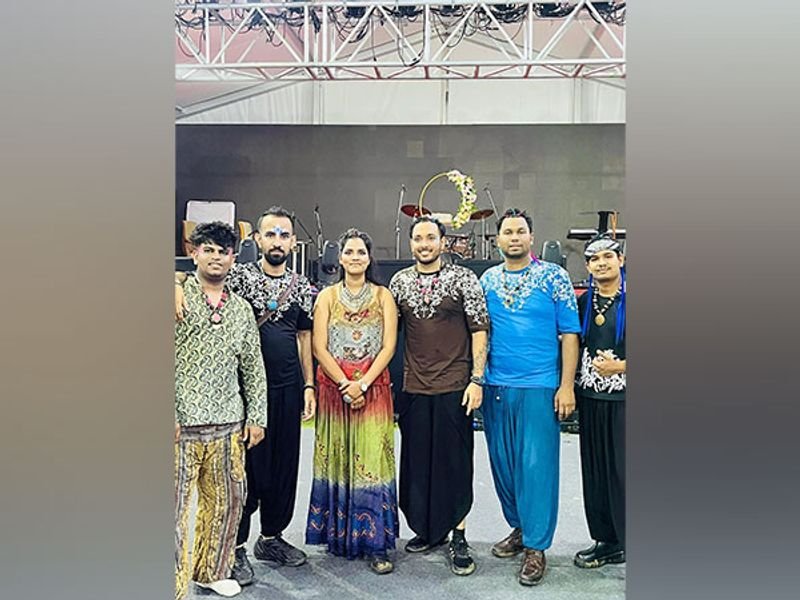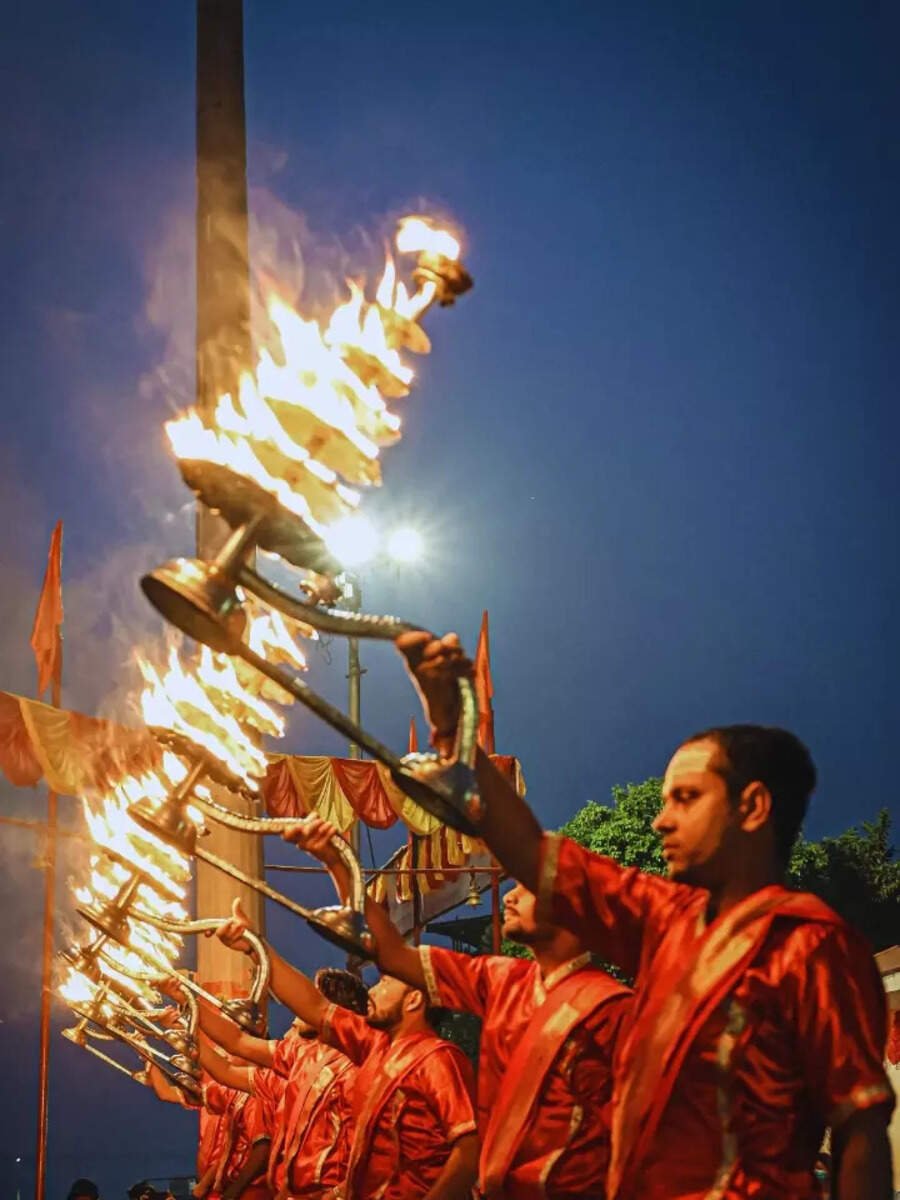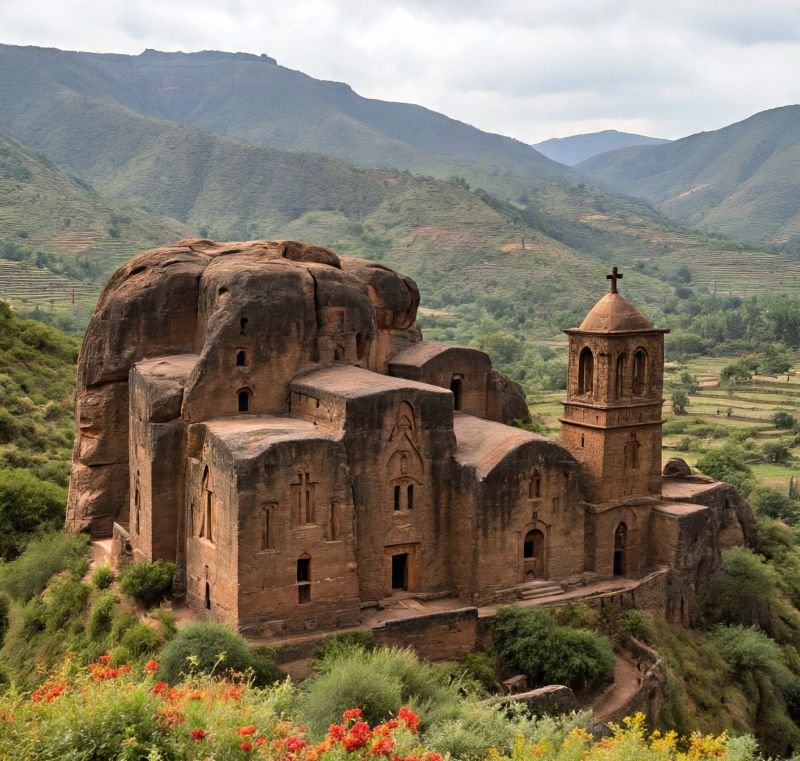Spiritual Travel
Bilaspur Set to Transform into Himachal’s Ultimate Adventure and Spiritual Hub

Move over, Manali and Shimla! Bilaspur is gearing up to become the state’s next big tourism hotspot, blending adrenaline-pumping adventures with serene spiritual experiences. The district administration has rolled out ambitious plans to develop water, land, and aerial tourism, promising something for thrill-seekers, pilgrims, and nature lovers alike.
A Sky-High Attraction: The Glass Bridge
Imagine walking on a transparent bridge, suspended high above breathtaking landscapes—Bilaspur’s upcoming Glass Bridge at Bharari will do just that! Designed to rival global attractions, this engineering marvel will offer daredevils an unforgettable experience while giving tourists a reason to extend their stay. Officials confirm the blueprint is ready, and construction will kick off soon after final approvals.
Sailing Through Scenic Routes: The Water Metro
Pilgrims visiting Maa Naina Devi will soon have a faster, more scenic journey thanks to the proposed Water Metro, connecting Bhakra Ghat to Kosariya Ghat. This isn’t just about convenience—it’s about turning travel into an experience. Devotees and tourists can hop on boats, enjoy the tranquil waters, and even transport their vehicles via waterways.
Jet Skis, Kayaking & More: Water Sports at Nakrana
Bhakra Dam’s pristine waters are about to get a lot more exciting! The district is eyeing water sports like jet skiing, kayaking, and boating to attract adventure junkies. The best part? Pilgrims heading to Naina Devi can now add a splash of adventure to their spiritual trip.
Bharari – The New Stopover Destination
Strategically located near Shimla, Manali, and Dharamshala, Bharari will soon feature modern tourist hubs with food plazas, parking, rest areas, and info centers. No more cramped pit stops—just smooth, comfortable breaks for travelers.
Listening to Locals: Boaters Get a Voice
Deputy Commissioner Rahul Kumar made sure local boat operators were heard during inspections, promising quick fixes to their concerns. This people-first approach ensures tourism growth benefits everyone.
Bilaspur’s transformation isn’t just about flashy infrastructure—it’s about jobs for youth, better travel experiences, and putting this hidden gem on India’s tourism radar. With projects set to launch soon, the district is poised to become a must-visit for those seeking adventure, spirituality, and untouched natural beauty.
Spiritual Travel
Shiva Tribe Debuts in Gurgaon’s Tikli-Raiseena: IMPC’s Bold Step to Merge Spirituality, Rural Tourism, and Modern Family Wellness

VMPL
New Delhi [India], August 4: In the lush rural landscape of Tikli-Raiseena near Gurgaon, a new chapter in India’s spiritual and rural tourism ecosystem quietly unfolded. The International Mandir Prabandhak Committee (IMPC) launched its ambitious spiritual wellness initiative–Shiva Tribe–an experience-driven, immersive space designed to reconnect Gen Z and modern families with India’s timeless spiritual roots.
Set against the tranquil backdrop of Haryana’s Aravalli fringes, Shiva Tribe is more than a mandir–it is a curated journey of self-discovery, holistic wellness, and cultural revival, seamlessly merging ancient wisdom with modern aspirations. The inaugural three-day Pran Pratishtha Mahotsav was held in July, graced by spiritual luminaries including Pujya Shri Sudhanshu Ji Maharaj, Pujya Shri Dayanand Ji Maharaj, and dignitaries such as Haryana’s former Minister Shri Om Prakash Dhankar. Business leaders, rural development advocates, and spiritual patrons attended in significant numbers–signaling a rising interest in faith-based tourism models.
Spiritual Tourism: India’s Growing Wellness Sector
India’s spiritual tourism market is undergoing a silent revolution. According to the Ministry of Tourism, the wellness and spiritual tourism segment is projected to reach USD 30 billion by 2028, growing at a CAGR of over 10%. With over 330 million domestic religious tourists recorded annually and rising international interest in authentic Indian experiences, initiatives like Shiva Tribe have the potential to create high-value, low-impact tourism models in rural belts–generating employment, fostering entrepreneurship, and revitalizing local economies.
“In today’s fragmented lifestyle, families are searching for meaningful escapes–not just vacations. Shiva Tribe is that sacred pause–a place to reconnect, reflect, and realign, together,” said Dr. Preet Sandhuu, mentor of the project and a key voice in India’s contemporary spiritual movement.
A New Blueprint: Spirituality Meets Community Living
Unlike traditional spiritual centers, Shiva Tribe offers a complete spiritual-eco retreat–including weekend live devotional music by its in-house ‘Shiva Tribe Band’, yoga sessions, mantra-infused meditations, Vedic rituals, and stay facilities for families. It’s a full-circle experience designed to inspire urban youth and families alike to step into a more conscious, value-driven lifestyle.
“Here, spirituality is not a sermon–it’s an experience,” said Shri MP Singh, project visionary and founder of ShivaTribe. “We want to build a network of such community-driven centers across rural India, using temple heritage as a catalyst for rural rejuvenation and youth engagement.”
Rural Regeneration Through Faith
The Tikli model aligns with India’s rural tourism policy goals by transforming underexplored rural regions into mindful tourism destinations. With over 60% of India’s population residing in villages, initiatives like this leverage India’s spiritual capital to promote rural entrepreneurship, handicrafts, organic farming, and ecotourism–creating a sustainable rural economy rooted in culture and community.
IMPC’s Broader Mission
The International Mandir Prabandhak Committee (IMPC), known for initiatives like the Mahasangam Yatra, Trisul Yatra and Shiv-Shakti Kendras, is rapidly becoming a bridge between India’s ancient temple traditions and its digital future. Its work focuses on temple modernization, spiritual leadership development, and community revival–backed by collaborations with scholars, saints, and civic leaders.
By anchoring the Shiva Tribe initiative in Tikli, IMPC demonstrates how faith-based community models can attract tourism, foster economic inclusion, and support national goals like ‘Viksit Bharat’ and ‘Digital Bharat’.
Shared by
(ADVERTORIAL DISCLAIMER: The above press release has been provided by VMPL. ANI will not be responsible in any way for the content of the same)
(This content is sourced from a syndicated feed and is published as received. The Tribune assumes no responsibility or liability for its accuracy, completeness, or content.)
Spiritual Travel
10 oldest temple towns in India for spiritual getaways – The Times of India

10 oldest temple towns in India for spiritual getaways The Times of India
Source link
Spiritual Travel
Lalibel booming tourism to its living rock‑hewn churches is transforming pilgrimage, surfacing preservation challenges and empowering communities across Ethiopia

Monday, August 4, 2025
Lalibela
It was indicated that eyes are now turning more intensely toward Lalibela in northern Ethiopia, where the interplay of ancient faith, medieval architecture, and modern pilgrimage is believed to be reshaping how sacred destinations are valued and marketed in today’s travel industry.
In observers’ views, the spiritual vitality and historical resonance of this site were thought to be redefining tourism’s stance toward places once considered static heritage. They reportedly pointed out that, unlike monuments no longer in active use, Lalibela continues to be a functioning religious centre, shepherded by a community of worshippers. They maintained that this ongoing sacred tradition was elevating the visitor experience from detached admiration to emotionally resonant engagement, cultural sensitivity, and meaningful human connection.
Critics and analysts mentioned that modern travellers, especially those influenced by experiential and cultural tourism trends, are increasingly dissatisfied with merely viewing relics. It was said they crave access to the narratives, ceremonies, and living practice embedded in places like Lalibela. Experts were cited asserting that this demand is prompting travel strategists to shift away from sterile, museum-style representation toward immersive, respectful storytelling.
They went on to note that such an evolution—forged at the intersection of heritage and spirituality—was pushing tour designers, cultural custodians, and heritage managers to adopt ethical storytelling principles and sustainable engagement practices. They added that it was no longer enough to safeguard stone; attention now needed to be paid to preserving living traditions, local craftsmanship, and daily spiritual practices that give the site its identity.
It was emphasized that marketing messages are increasingly weaving in themes such as authentic spirituality, cultural continuity, and artisan heritage. According to analysts, Lalibela has emerged as a model for heritage tourism that transcends passive observation: it invites visitors to participate, learn, and be emotionally stirred.
Sited Shifts the Travel Industry Observers Foresee
They reportedly affirmed that as sites like Lalibela gain wider recognition, certain travel industry trends are expected to intensify:
- Cultural and spiritual tourism is anticipated to take a central place in international travel strategies.
- Infrastructure development—roads, lodging, visitor amenities—around rural heritage sites is projected to expand.
- Tourists are said to increasingly favour small-group, slow-paced, immersive itineraries rather than mass-tourism blitzes.
Observers interpreted these as signs that tourism is moving away from fast consumption toward slower, more personalized, and emotionally resonant journeys.
How the Site Was Built and Persists
It was recounted that perched in Ethiopia’s elevated precincts, the rock-carved churches of Lalibela stand as extraordinary testimonies to devotion and craftsmanship. Commissioned in the 12th century by a visionary monarch, King Lalibela, the site comprises 11 churches and 2 chapels, each hewn entirely from single volcanic rock blocks.
They stated that the king’s aspiration was not merely symbolic: he intended to recreate a “New Jerusalem”, forging a spiritual counterpart in Ethiopia at a time when access to the true Jerusalem was limited. Observers noted that this was therefore a project of both religious symbolism and political significance.
They described the construction techniques as remarkable: first, trenches were carved—sometimes as deep as 15 meters—into the volcanic plateau. Then artisans painstakingly shaped churches from the central rock mass. Some structures were sunk into the ground, while others were carved into cliffs or bounded by dry moats, lending the impression of freestanding stone edifices.
They added that an intricate network of underground galleries, narrow corridors, shaded courtyards, and hermit cells connect the buildings, forming a spiritual labyrinth that is as architecturally evocative as it is devotional.
Crucially, they reaffirmed that Lalibela is not a site of abandoned ruins. It has served continuously as a place of prayer, chant, and celebration for over 800 years. Daily services and rituals, including significant festivals like Timkat and Genna, are still conducted within its sacred walls, making it a living sanctuary rather than a relic frozen in time.
Industry Reactions to Spiritual Tourism Demand
It was asserted that increasing demand for spiritually grounded travel is prompting the tourism industry to rethink offerings. They observed that tourists now seek more than photogenic settings—they want profound experiences. Lalibela was said to be recognized as delivering that depth.
They detailed how itineraries are being adapted: instead of quick sightseeing, guests are encouraged to stay several nights in the vicinity—dining with community members, taking part in prayers, and observing local traditions. This slow travel model prioritizes connection, authenticity, and reflection above consumption.
They reported that annual religious events at Lalibela are rapidly becoming global highlights. During such festivals, the churches teem with pilgrims, clergy, ritual, and song—creating a powerful experience that standard tours cannot replicate.
They mentioned that increased visitor volume is inspiring local development: improvements in transport, eco-conscious lodging, and visitor facilities are underway. When guided by local insight and cultural respect, these developments are expected to support economic uplift while preserving the site’s sacred character.
Global Effects on Travelers
Observers suggested that the influence of Lalibela extends far beyond Ethiopian borders. They argued that it’s reshaping global travelers’ understanding of heritage and travel, inspiring those who yearn for emotional resonance and spiritual insight.
Often called the “Eighth Wonder of the World,” Lalibela is attracting visitors seeking stories of human creativity, perseverance, and devotion. It was noted that the knowledge that these structures were carved by hand—stone by stone—over centuries adds layers of emotional depth to the journey.
They pointed out that the designation of Lalibela as a UNESCO World Heritage Site since 1978 has backed up its status as both culturally and spiritually significant. For many tourists, this label is more than symbolic—it’s a guarantee of authenticity and integrity.
It was underlined that what distinguishes Lalibela is the coexistence of physical monument and living faith. Visitors are not mere spectators; they are drawn into a centuries-old spiritual tradition. Observers claimed that Lalibela offers something rarely found: history that one can still touch, hear, and feel in an active religious context.
Observed Broader Cultural and Commercial Implications
They reiterated that the sacred resonance and cultural gravity of Lalibela are influencing how the tourism sector frames ancient sites. Contrasts were made with attractions that function solely as display pieces. Instead, Lalibela is upheld as a model of what heritage destinations might be: active, human-centered, and spiritually alive.
It was argued that this shift calls professionals in tourism and heritage preservation to:
- Place cultural empathy and community involvement at the heart of storytelling.
- Foster sustainable tourism that not only preserves stone but also prolongs living rituals, artisan practices, and worship.
- Highlight authentic spiritual continuity and local craftsmanship as key values in marketing culturally aware travel.
Analysts reported that travel messaging increasingly focuses not on what a place “looks like,” but on what it “feels like.” Lalibela, they said, gives travelers the chance to experience faith in motion.
Industry Trends Emerging
They forecast a set of trends expected to emerge globally:
- Spiritual and cultural tourism steadily assuming greater importance in destination planning.
- Significant investment in rural heritage infrastructure, such as access roads, lodging, and visitor centers.
- A shift in traveler behavior favoring smaller-group, reflective, slow-immersive travel rather than mass movement.
They indicated that such patterns mark a turning point: from superficial travel to journeys that are personal, culturally mindful, and emotionally meaningful.
Legacy and Global Significance
It was stated that built in the 12th century, the Lalibela complex embodies a fusion of architectural genius and unwavering religious intent. The 11 churches and two chapels, carved from single volcanic stones, echo a vision of New Jerusalem, meant to serve Ethiopian Christians during a time when pilgrimage to the original site was blocked.
They further noted that the site’s construction process—excavating 15-meter deep trenches and carving monolithic structures—speaks to both spiritual fervor and artistic mastery. The maze of tunnels, alleys, and monastic cells reinforces the sense that architecture at Lalibela was meant to inspire both awe and introspection.
Significantly, they reaffirmed that for more than eight centuries, this has not been an archaeological exhibit but a space of continuous worship. The rituals of today are intimately linked to the rituals of centuries past—giving the site a continuity that is rare on the global heritage map.
Final Reflections on Traveler Effects
They concluded that Lalibela’s combination of sacred function, human craftsmanship, and cultural authenticity is inspiring new paradigms in global tourism. Travelers increasingly seek depth, authenticity, and transformative experiences—and the site is being cited as a prime example.
They believed that Lalibela is influencing global tourism norms:
- Encouraging destinations to preserve not only physical structures but living traditions.
- Motivating stewardship that supports community well‑being alongside heritage protection.
- Reinforcing the idea that the most memorable travel experiences involve spiritual or emotional resonance, not just visual spectacle.
They suggested that Lalibela represents more than a destination—it embodies a journey of faith, time, and cultural immersion, offering travelers a profound encounter with history made alive.
-

 Brand Stories2 weeks ago
Brand Stories2 weeks agoBloom Hotels: A Modern Vision of Hospitality Redefining Travel
-

 Brand Stories1 week ago
Brand Stories1 week agoCheQin.ai sets a new standard for hotel booking with its AI capabilities: empowering travellers to bargain, choose the best, and book with clarity.
-

 Destinations & Things To Do2 weeks ago
Destinations & Things To Do2 weeks agoUntouched Destinations: Stunning Hidden Gems You Must Visit
-

 Destinations & Things To Do1 week ago
Destinations & Things To Do1 week agoThis Hidden Beach in India Glows at Night-But Only in One Secret Season
-

 AI in Travel2 weeks ago
AI in Travel2 weeks agoAI Travel Revolution: Must-Have Guide to the Best Experience
-

 Brand Stories1 month ago
Brand Stories1 month agoVoice AI Startup ElevenLabs Plans to Add Hubs Around the World
-

 Brand Stories3 weeks ago
Brand Stories3 weeks agoHow Elon Musk’s rogue Grok chatbot became a cautionary AI tale
-

 Asia Travel Pulse1 month ago
Asia Travel Pulse1 month agoLooking For Adventure In Asia? Here Are 7 Epic Destinations You Need To Experience At Least Once – Zee News
-

 AI in Travel1 month ago
AI in Travel1 month ago‘Will AI take my job?’ A trip to a Beijing fortune-telling bar to see what lies ahead | China
-

 Brand Stories2 weeks ago
Brand Stories2 weeks agoContactless Hospitality: Why Remote Management Technology Is Key to Seamless Guest Experiences

You must be logged in to post a comment Login